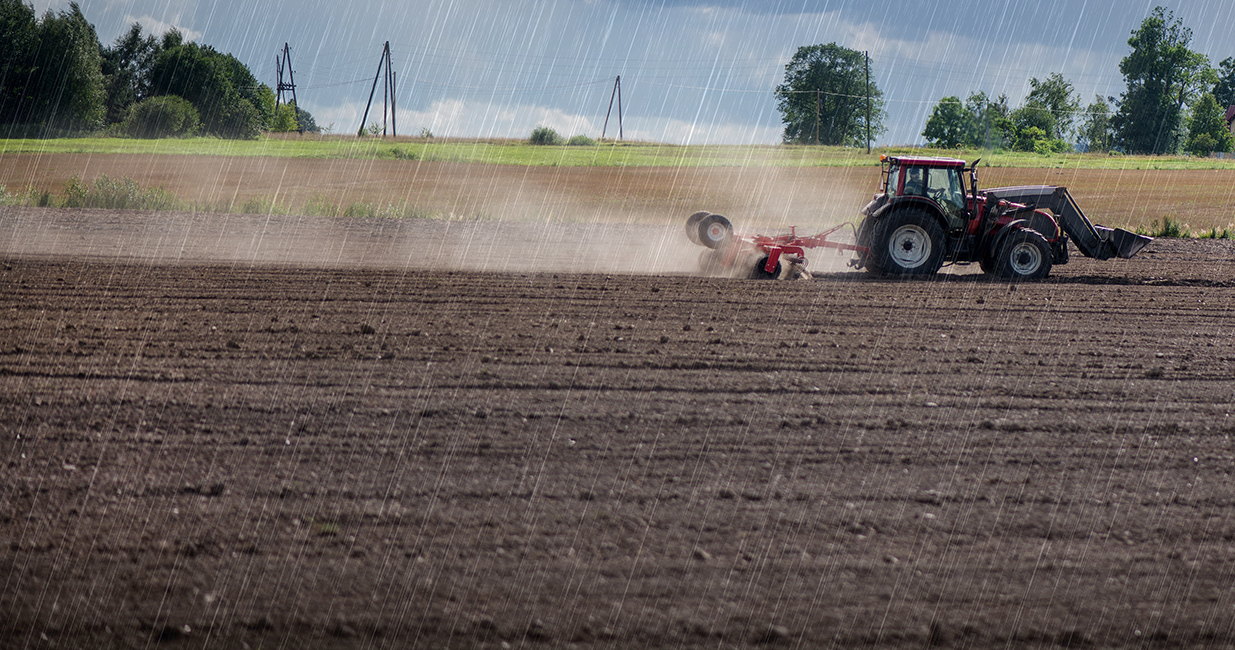
Stormy conditions prepare the ground for new growth
The demands of specialist lending funded by securitisation require Australasian nonbanks to ensure their books have maximum resilience to economic conditions. Arrears performance has so far held up very well in the current cycle and there are – albeit very early – signs that conditions may be improving for nonbanks.
Laurence Davison Head of Content KANGANEWS
Australasian nonbank lenders were facing an invidious squeeze on three fronts at the start of 2023. Originating new credit was uniquely challenging both in the context of originating new loans and funding new books. Meanwhile, the interest rate and economic environment was casting a pall over the prospects for loan performance.
The headwinds have not yet dissipated, but there are signs of a more positive environment in the medium term – some of which suggest it is already emerging. Notwithstanding the potentially improving tone in mortgage lending, nonbanks have also taken advantage of structural shifts in other areas of the credit market – notably auto and asset finance – to add spark to an otherwise challenging origination landscape.
In the core asset sector for most nonbanks, mortgage arrears have ticked up in 2023 but there is growing confidence that this only represents mean reversion from a period of ultra-low loan delinquency during the pandemic period.
Borrowers appear to have adjusted to much higher rates by changing household budgets so they can continue to meet payments or by managing serviceability issues in a way that has not fed through into capital loss or, in many cases, even arrears. This is possible because, while loan cost has increased, unemployment remains very low and the housing market tight.
Meanwhile, the end of the term funding facility (TFF) is changing lending and funding dynamics in favour of nonbank lenders. Competition in the prime mortgage space may be easing, which should stem the bleeding of borrowers refinancing out of nonbank loans. Banks’ cost of funds is increasing as ultra-cheap TFF debt matures and the deposit market in particular becomes more competitive, at the same time as cost of funds in the securitisation sector – which most nonbanks rely on – is showing signs of easing.
Analysts and investors in the nonbank sector acknowledge – as do the lenders themselves – that the pandemic period and its immediate aftermath created significant challenges for their sector. But by September 2023 a mood of cautious optimism is emerging. There is a sense that the worst may be behind the market and that, having come through this period, nonbanks are well set up to exploit a better environment moving into 2024.
ASSET PERFORMANCE
Underlying every aspect of nonbank performance and outlook is the robustness of Australasian loan quality. While home loan borrowers in Australia and New Zealand have confounded the doubters before – there was, for instance, no housing or securitisation market crash during or after the global financial crisis, much to many observers’ surprise – their resilience in 2022-23 may be the clearest sign yet that this is a fundamentally resilient sector.
By Q3 2023, most Australian borrowers will have felt the full impact of a cash rate that increased to 4.1 per cent from just 0.1 per cent in barely a year. Australians repaying a A$500,000 (US$321,000) average mortgage – itself barely half the national average house price – will be finding close to A$1,000 extra per month compared with their repayments before the hiking cycle commenced.
The Reserve Bank of New Zealand, meanwhile, has increased the official cash rate by an even greater amount – 5.25 per cent – from the first hike, in October 2021, to the most recent, in May this year.
Arrears have risen as a result. S&P Global Ratings SPIN data for Q2 2023, published on 28 August, show the arrears rate for loans included in local residential mortgage-backed securities (RMBS) pools increasing since late 2022. But the most recent print arrested the increase, and the level of arrears in prime and nonconforming pools is no greater than the historical average from the period between the financial crisis aftermath and the onset of COVID-19.
“Arrears were lower during the pandemic period but this was mainly due to government extravagance in the form of billions of dollars going to employees and small business owners,” says Jonathan Rochford, portfolio manager at Narrow Road Capital in Sydney. “The substantial increase to household savings is unwinding at the same time as borrowers are dealing with significantly higher interest rates. Even so, mortgage arrears appear to be back to the long-run average rather than climbing through it.”
Tally Dewan, Sydney-based director, fixed income and rates desk strategy at Commonwealth Bank of Australia, says the latest data suggest normal patterns of arrears performance are holding. In particular, she points out, there is typically a seasonal uptick in arrears after Christmas, and again – to a somewhat lesser extent – after Easter.
“This means there are generally lower delinquency rates from around mid-year until at least October, which is what we are experiencing this year,” Dewan continues. “But it is positive that this normal story seems to be playing out despite the fact we have had 400 basis points of rate rises. It would not have been surprising if the impact of higher rates had been sufficient to overwhelm the seasonal pattern.”
“It has been well documented over recent years that parts of the ADI sector have been withdrawing from certain parts of the auto and asset finance market. The relatively lower competition in this sphere means the desire to supplement volume in this higher-yielding product has been viewed as a prudent strategy.”
The suggestion that rate rises have largely been absorbed by Australian borrowers comes with a caveat – but it is one that does not apply to nonbank lenders to anything like the same extent as banks. This is the much discussed ‘mortgage cliff’: the swathe of ultra-low fixed-rate mortgages written during the pandemic, ever more of which are coming to the end of their terms. These borrowers are being hit not just by much higher repayments but also the shock of their arrival in a single swoop.
By September 2023, the Australian mortgage market does not appear to have gone over the edge of this cliff. There is still some risk, however, as most analysts peg late 2023 and early 2024 as the peak for fixed-rate resets. Even so, the fuel to the original fixed-rate fire was three-year TFF funding offered by the Reserve Bank of Australia at 0.1 per cent interest – which was only available to authorised deposit-taking institution (ADI) entities.
The nonbanks cerainly struggled to compete with banks’ fixed-rate offerings during this period. But they also have much less to worry about as those rates expire. S&P data show nonbanks’ exposure to fixed-rate mortgages is around 6 per cent, sector-wide, compared with nearly 16 per cent for major banks and 14 per cent for regional banks across Australian RMBS. The exposure is negligible in the nonconforming sector. Erin Kitson, director, structured finance at S&P in Melbourne, tells KangaNews: “We are not going to get a cliff effect in the Australian RMBS sector with fixed-rate loans in this sort of proportion.”
The situation is somewhat harder to read in New Zealand, where the mortgage market skewed more to fixed-rate loans even before the pandemic. A relatively small securitisation market also means a data set like SPIN is inevitably less comprehensive.
Kitson comments: “It is possible that there may be more arrears to flow through in New Zealand because the fixed-rate component of the market means we are not yet seeing the full impact of higher rates. Having said this, low unemployment in New Zealand, like Australia, will temper mortgage defaults.”
NONCONFORMING HOLDING UP
Robust asset performance also applies to the nonbanks’ traditional stronghold in the mortgage sector: nonconforming lending. While the period immediately before the pandemic was characterised by nonbanks increasingly competing with ADIs for prime business – thanks to a more level playing field for floating-rate loans and the nonbank service proposition – it is the nonconforming space where these lenders dominate market share.
Rochford notes that nonconforming arrears exhibit a fairly similar pattern to prime in that they have gone up but only to the long-run average. Overall performance once again demonstrates the difference between the Australian nonconforming product, especially post-financial-crisis, and the historical concept of the subprime loan.
Rochford tells KangaNews: “We expect nonconforming arrears to be higher – there is a reason why it is called nonconforming. But it is not all bad borrowers: it could be a small business owner or someone who fell behind on an electricity bill or didn’t clear some debts. This is why they pay a premium interest rate.”
Kitson agrees that “nonconforming 2.0” – the type of loan written since the financial crisis – looks different from its ancestor. She explains: “Nonconforming nowadays is more of a mixed pool than traditional subprime: there are some credit impaired borrowers but also a lot of self-employed and others than might actually have quite high income but complex income streams.”
There is, Kitson continues, no doubt that traditional credit-impaired borrowers will in aggregate be experiencing greater mortgage stress in the current environment. But this is likely being kept in check by the other component of nonconforming, which may not be in the same situation at all.
Analysts and investors place significant faith in nonbank originators’ credit skills, based on their longstanding record of more complex lending, their scale relative to the major banks and the clear link between asset performance and funding outcomes (see box).
Nonbanks’ credit edge
Nonbank lenders have long marketed themselves on their credit skills. Investors say the realities of the sector mean such skills are critical – and they put lenders in good stead to deliver solid outcomes even through more challenging economic conditions.
Jonathan Rochford, portfolio manager at Narrow Road Capital, says the increasing bifurcation of the lending market – whereby banks focus almost exclusively on standard, straightforward prime lending and nonbanks deal with more complicated situations – has produced a marked difference in credit underwriting approaches.
Prime lending is a volume game, and Rochford says this means assumptions in credit decisioning. “Near enough is often good enough when it comes to banks’ assessment of, for instance, borrower expenses. This doesn’t pass muster for nonbanks. They typically examine borrowers’ bank statements, looking for things like exposure to buy-now, pay-later or payday loans.”
This detailed approach remains the case even as the larger nonbanks have increased the size of their books and diversified them. Rochford adds: “They have been able to scale up, adding staff – particularly credit analysts – and training them on how to look at what ‘Mr and Mrs Smith’ put across the table when they apply for a loan.”
HOUSEHOLDS STAND UP
The extent of Australasian household resilience is noteworthy. Borrowers have surprised many analysts with their ability and willingness to adapt budgets to higher rates to avoid falling behind on debt repayments. “Home loan borrowers exhibit very cautionary behaviour in the sense of making sure they don’t fall behind in arrears,” Kitson says. “They will pull back on most expenditure before their home loan repayment is at risk.”
Economic conditions have so far helped those borrowers that do get into stress avoid the worst case scenario of forced house sales in a falling market. Unemployment is still very low – at 3.6 per cent in Australia’s July print and the same level in New Zealand’s Q2 figure – which means borrowers still have income coming in. At the other end of the chain, undersupply of housing and high inward migration in both countries means property prices have held up and, just as importantly, homes continue to sell quickly.
Nonbanks themselves report that the subset of mortgage holders that are running into serviceability issues are typically able to curtail the hardship process by selling their property, often without loss.
Kitson adds: “Going into arrears is typically a final stage, and before a borrower does so they might make a proactive decision like selling the property. This might involve working with the lender to avoid going into arrears in the first place. A turnaround in property prices is enabling some borrowers to take this option without realising a loss.”
A robust housing market could also mean even a material increase in arrears does not become problematic for lenders and their debt investors. Dewan explains: “I think it is possible that we will see higher delinquency rates and, because of the way hardship cases are treated – they need to make repayments for six months before coming off delinquency lists – elevated rates will linger for a while. But I don’t expect this to feed through into losses provided the housing market continues to hold up.”
A relatively resilient household sector has also supported credit outside the mortgage space. The Australian and New Zealand auto markets, in particular, continue to experience an excess of demand as supply chain disruption slowed delivery of vehicles. Car buyers are still facing a wait time of 6-12 months to take delivery of new vehicles. Sector watchers believe this should support ongoing solid originations for auto lenders at just the same time as banks have pulled back from exposures in the space in much the same way as they did from marginal mortgage business.
“Many nonbank issuers report large increases in asset finance settlements, with some names continuing to expand offerings across their product suite while others have been acquiring portfolios or businesses,” says Martin Jacques, Sydney-based head of securitisation and covered bond strategy at Westpac Institutional Bank. “It has been well documented over recent years that parts of the ADI sector have been withdrawing from certain parts of the auto and asset finance market. The relatively lower competition in this sphere means the desire to supplement volume in this higher-yielding product has been viewed as a prudent strategy.”
ORIGINATION OUTLOOK
This is a fortunate coincidence, as nonbank lenders have looked to auto and asset finance as one of the main ways to plug the gap in their originations caused by the ultra-competitive mortgage market.
While nonbank lenders have not been as directly affected by the fixed-rate mortgage expiry story, they are feeling the impact of banks’ response. The high volume of borrowers with an incentive to explore refinancing by the end of low fixed-rate terms led the banks to a cut-throat approach to prime mortgage refinancing, including very thin lending margins and, for a while, offers of upfront cash rebates to borrowers to move to a new lender.
Conditional prepayment rates (CPRs) soared as a result of this competition – and they have lingered even beyond the end of the TFF and into the mid-part of 2023. Kitson explains: “Cash-back offers from major banks have gone, but the rates they are offering prime borrowers are still better than what a nonbank can provide. Once nonconforming borrowers pick up some seasoning and reduce the LVR [loan-to-value ratio] of their loan, they potentially get the ability to shop around for a prime mortgage.”
Kitson describes herself as “a little surprised” at how high CPR has climbed on some transactions though she also says she would not be surprised if it came off at least a little in the September data.
Dewan adds: “This is a generalisation and it doesn’t apply to every lender, but overall nonbank originators’ mortgage books have been shrinking. Competition in the prime mortgage space has actually led some nonbanks to take a deliberate strategy of not going for volume and instead preserving net interest margin.”
As a result, many nonbanks have sought to diversify their lending into more profitable areas including autos, asset finance and small business lending. Volume of nonmortgage asset-backed securitisation issuance has spiked as a result, even as nonbank prime RMBS supply has receded significantly.
This could pose a challenge for investors as they are being asked to look at new types of credit originated by nonbank names they have historically primarily followed in the mortgage sector. There appears to be confidence, however, that even if credit skills are not universal across sectors the understanding of how to build a good lending book probably is (see box).
Old dogs learning new lending tricks
Australian nonbanks have successfully pivoted into more diverse forms of lending. Credit skills are critical to this development – but investors say nonbanks have what it takes to build solid books in new asset classes.
To some extent, established lenders moving into new areas of the credit market have an advantage over new entrants. For instance, Jonathan Rochford, portfolio manager at Narrow Road Capital, says: “I look at each programme individually. But, as a general rule, I would rather see a new programme from an old originator that has proven itself than a brand new originator.”
Narrow Road has funded a number of first-time term outs, though even here Rochford notes that the lender will have established a track record of good origination in its warehouses. “The first thing we want to see is credit skills,” he says. “This isn’t just about a business having people who have worked at banks: those roles may not involve actually lending money, and even when they do it might be a case of straightforward, computer-based processing.”
Rochford names Thinktank as a good example of a business deploying complementary credit skills. “It started as a specialist commercial property lender to the SME sector but now most of its new business is residential loans to the same small business owners. They have the credit skills so, in a sense, they have done the harder loans first.”
James Donovan, portfolio manager at Challenger Investment Management, points out that even some new brand names have been formed from legacy businesses and have carried over longstanding expertise in their focus area. Others have focused on bringing in specialist staff in a new area of lending rather than assuming credit underwriting skills are transferable.
“Some of the mortgage lenders that are now active in autos and equipment are hugely experienced in what they do currently, including an understanding of debt funding and what is required in the securitisation market,” Donovan says. “It provides us considerable comfort to know that they know what they’re doing and how the market works.”
BRIGHTER FUTURE
Overall, the analyst and investor view seems to be that the coming year looks more positive for Australasian nonbanks. They should certainly be facing a more constructive environment for mortgage origination, even in the prime space.
Rochford explains: “My sense is that there are definitely green shoots on the mortgage origination side. The end of the TFF is fantastic in the sense of levelling the playing field in a very competitive market. The other thing worth noting is that pricing has noticeably tightened in the securitisation market, across the capital stack, since late July – while senior bank paper has been fairly stable. This is bringing nonbanks back into the game again.”
Dewan adds: “My expectation is that this current competitive environment, and thus CPRs, will ease as the fixed-rate mortgage cliff starts to play out, which it will over the course of H2 2023 and into the start of next year. But we are already starting to see some degree of normalisation coming through in origination data: we have just seen the bank share of new loans fall for the first time since 2020, for instance. This could be beneficial for nonbanks in the prime space.”
Competition should also be assisted by a more level funding playing field. Jacques notes that capital market pricing has tightened since mid-year, with recent nonbank prime RMBS deals printing at around 130 basis points over BBSW in their senior tranches and nonconforming at around 150 basis points over BBSW – in both cases 25 basis points tighter than peak.
“While elevated warehouse margins may be a drag, these should follow primary spreads tighter – while the expansion into other asset classes will help diversify the revenue base for future stability of [nonbank] earnings,” Jacques concludes.
On the asset side, market watchers are largely confident that performance will remain solid in the absence of a major tail-risk event. Pressure on borrowers will stay elevated, though. James Donovan, portfolio manager at Challenger Investment Managementin London, says his firm expects interest rates will stay high for some time. Borrowers, who have so far been able to tighten their belts but are on the cusp of serviceability issues, may then start to fall into arrears. He is reluctant to predict that arrears have peaked as a result. An increasing trend in unemployment would start to increase Challenger’s worry factor.
But Donovan adds: “Even then, we are focused on our securitisation structures – especially down the capital stack – and how robust they are to worsening loss performance. We’re picky when it comes to the originators we work with. This gives us confidence when it comes to the competence of those originators to successfully manage their borrowers – many of which have been doing so for a long time.”

nonbank Yearbook 2023
KangaNews's eighth annual guide to the business and funding trends in Australia's nonbank financial-institution sector.












